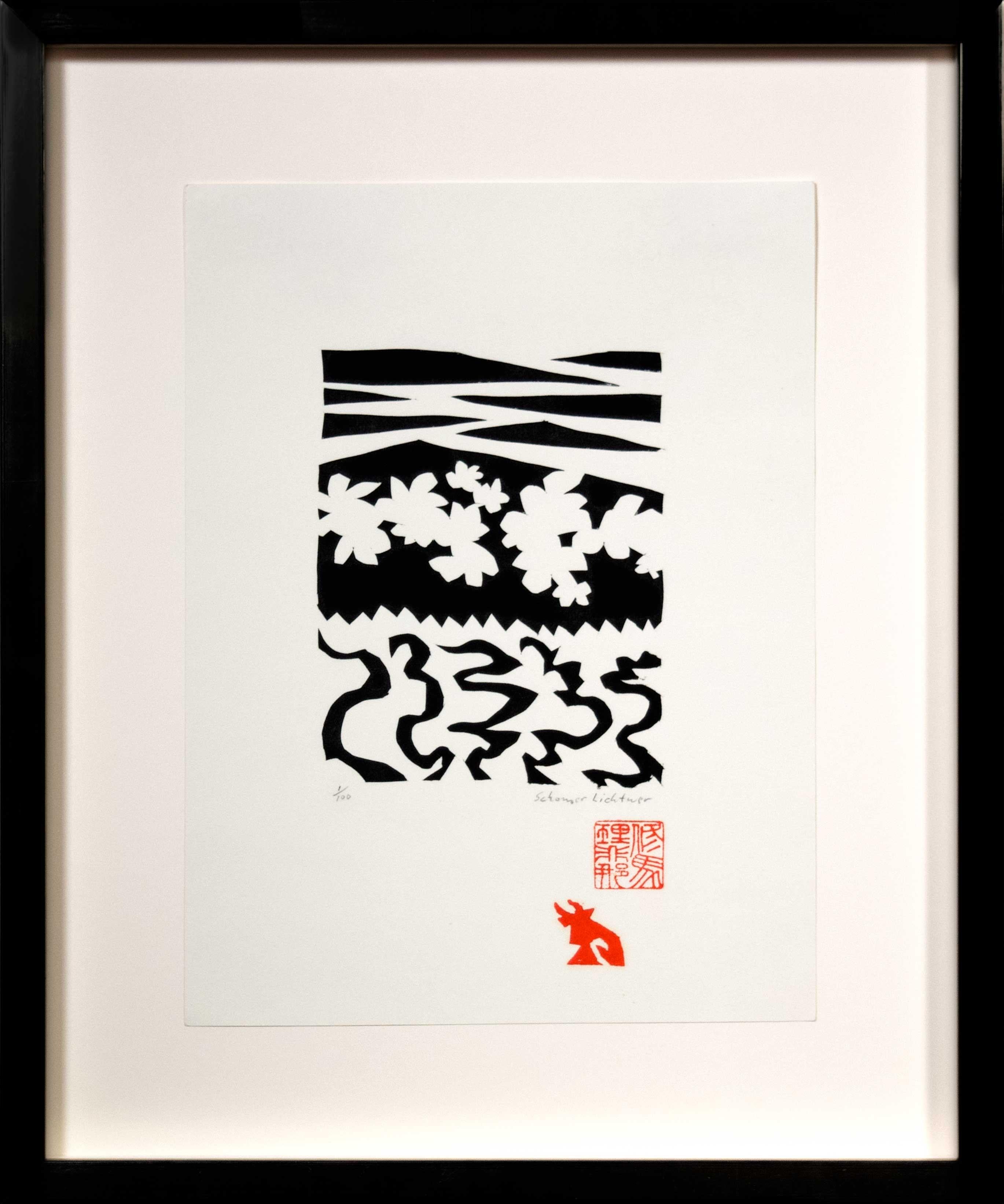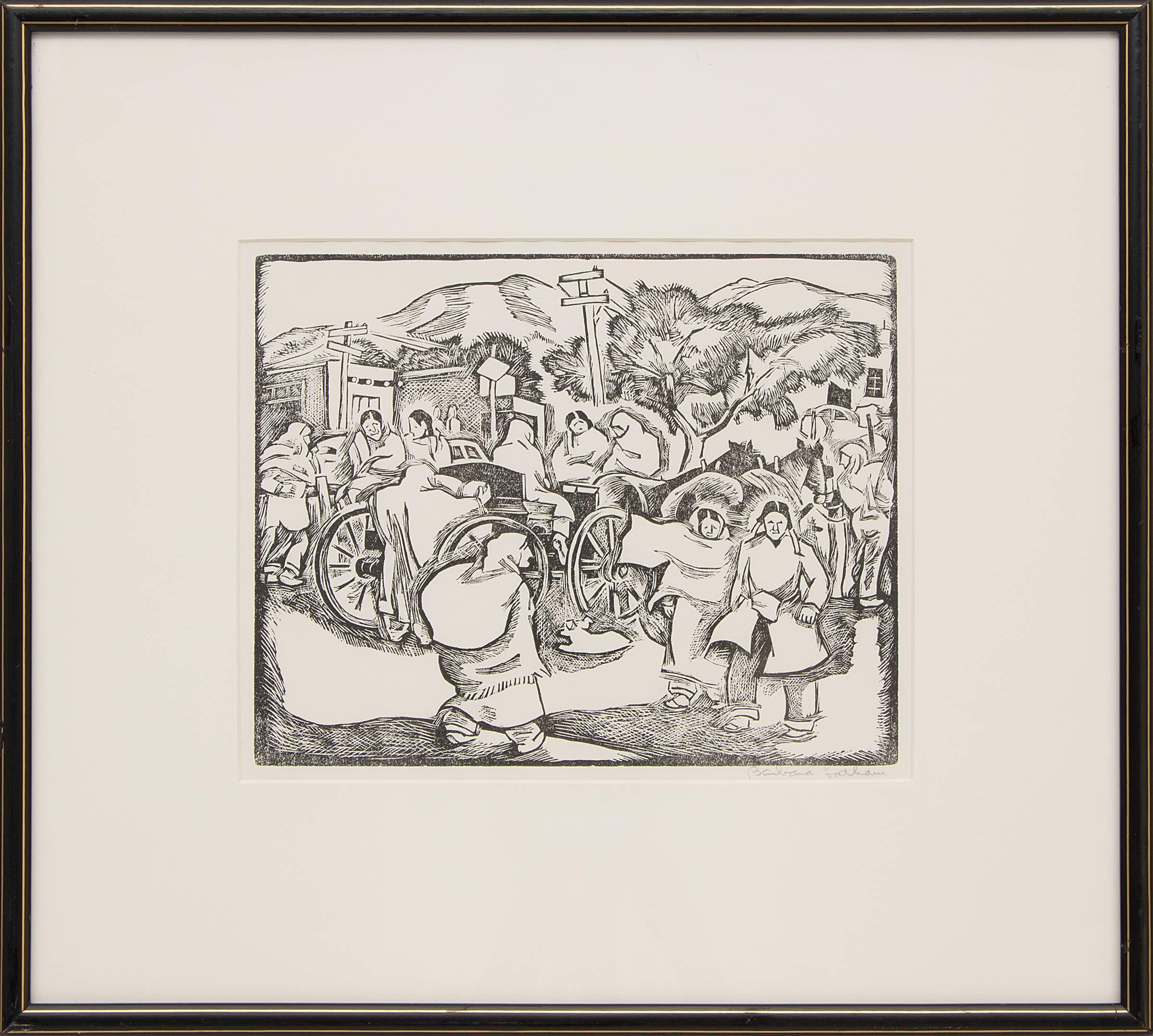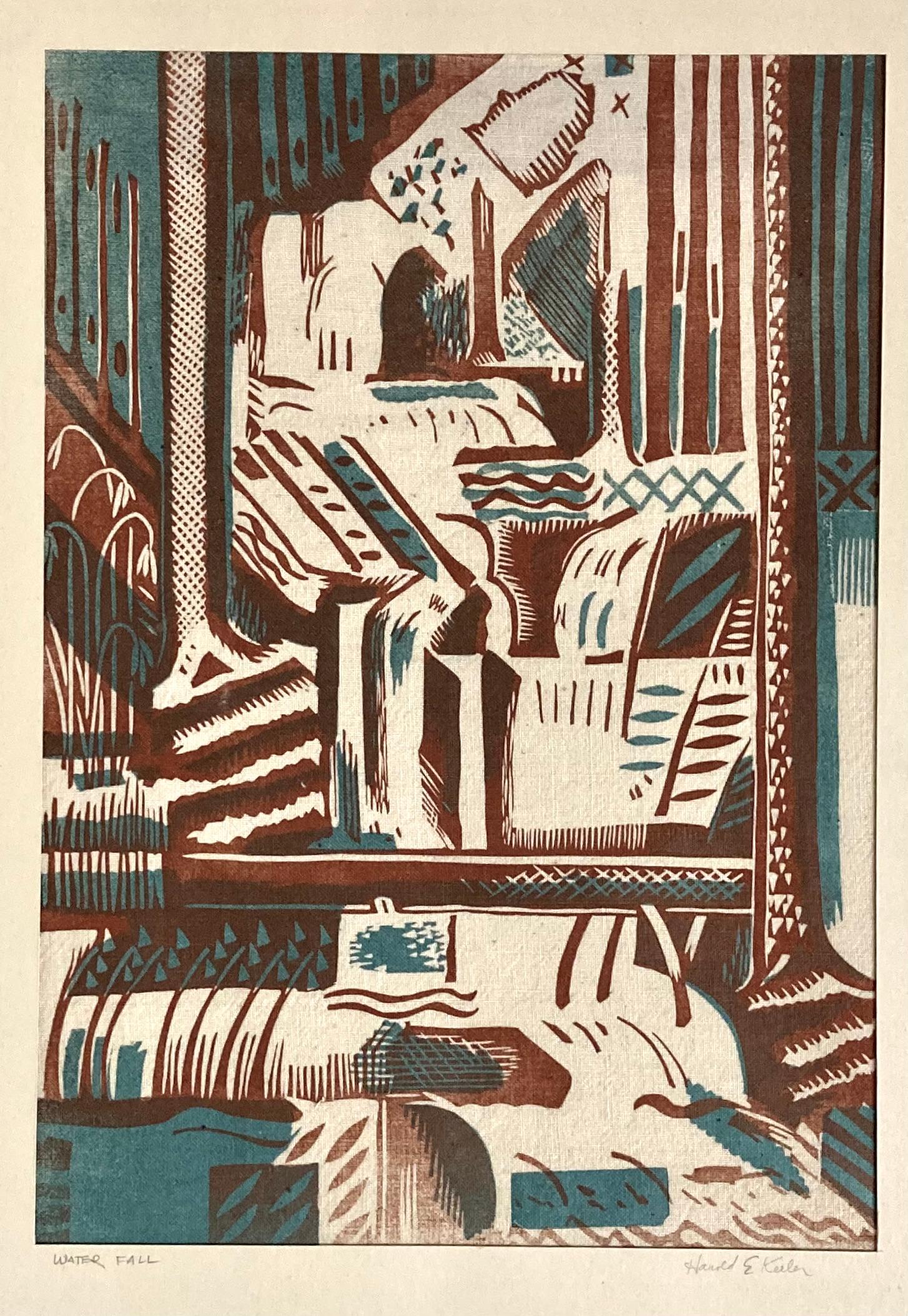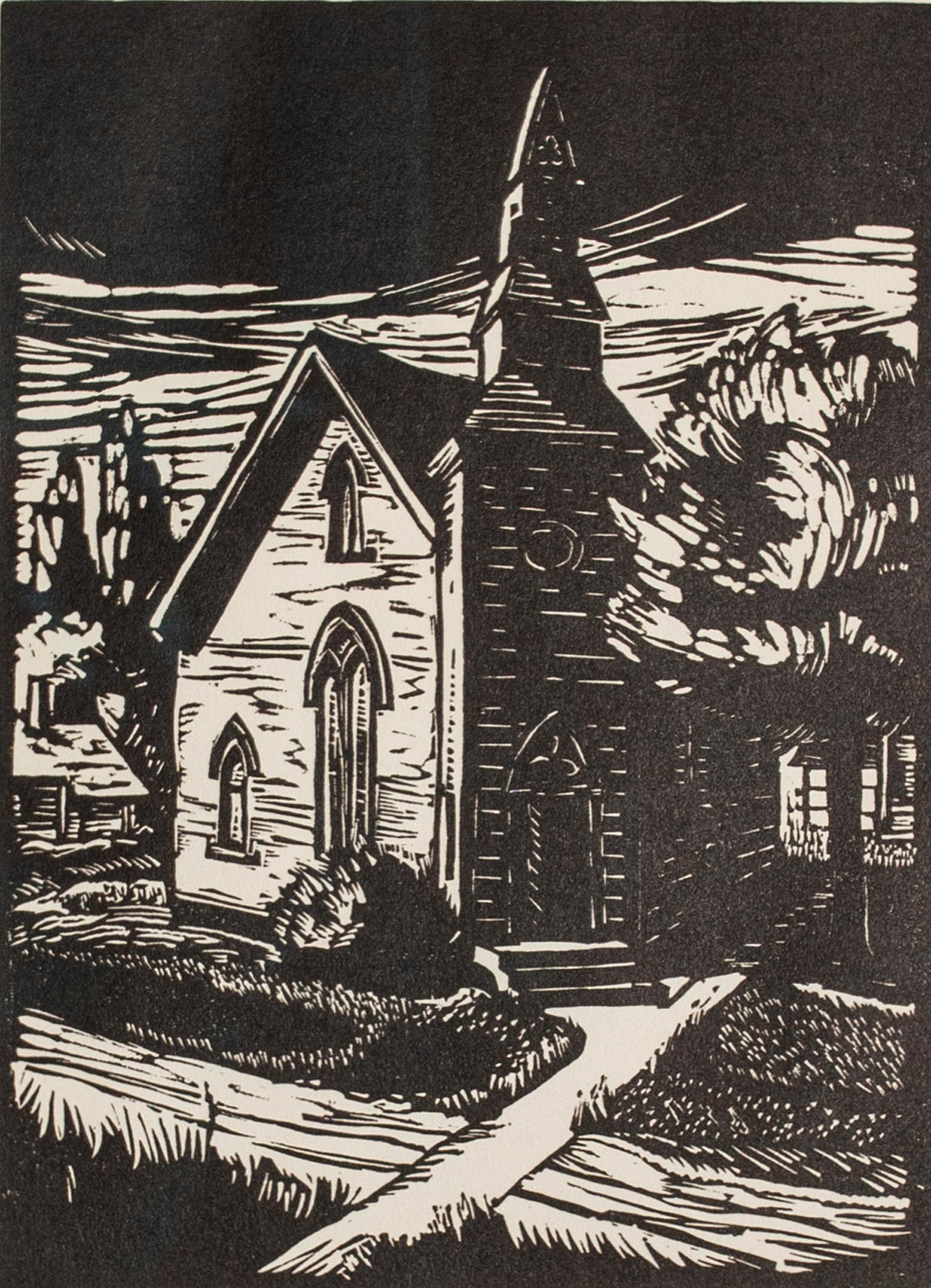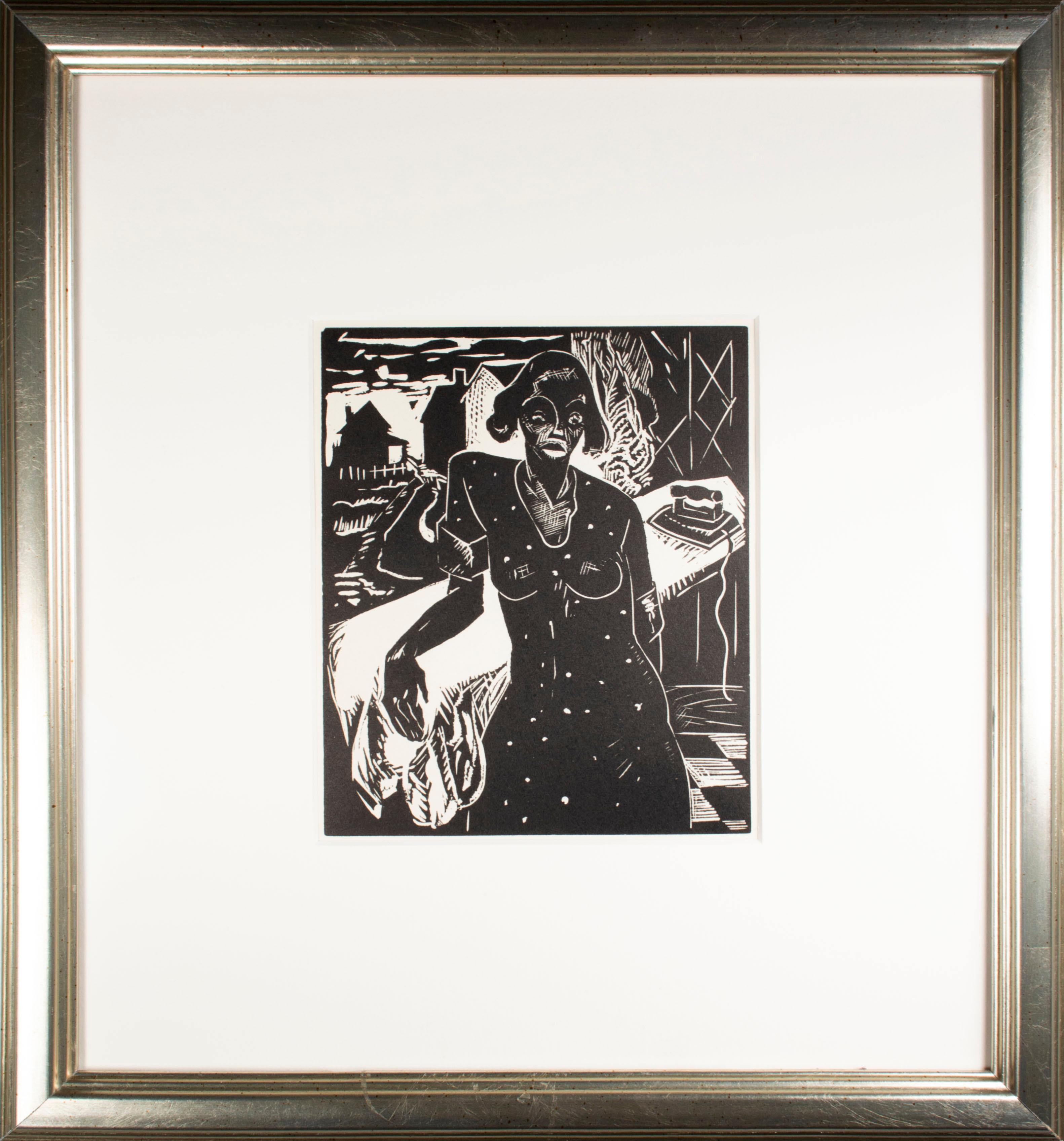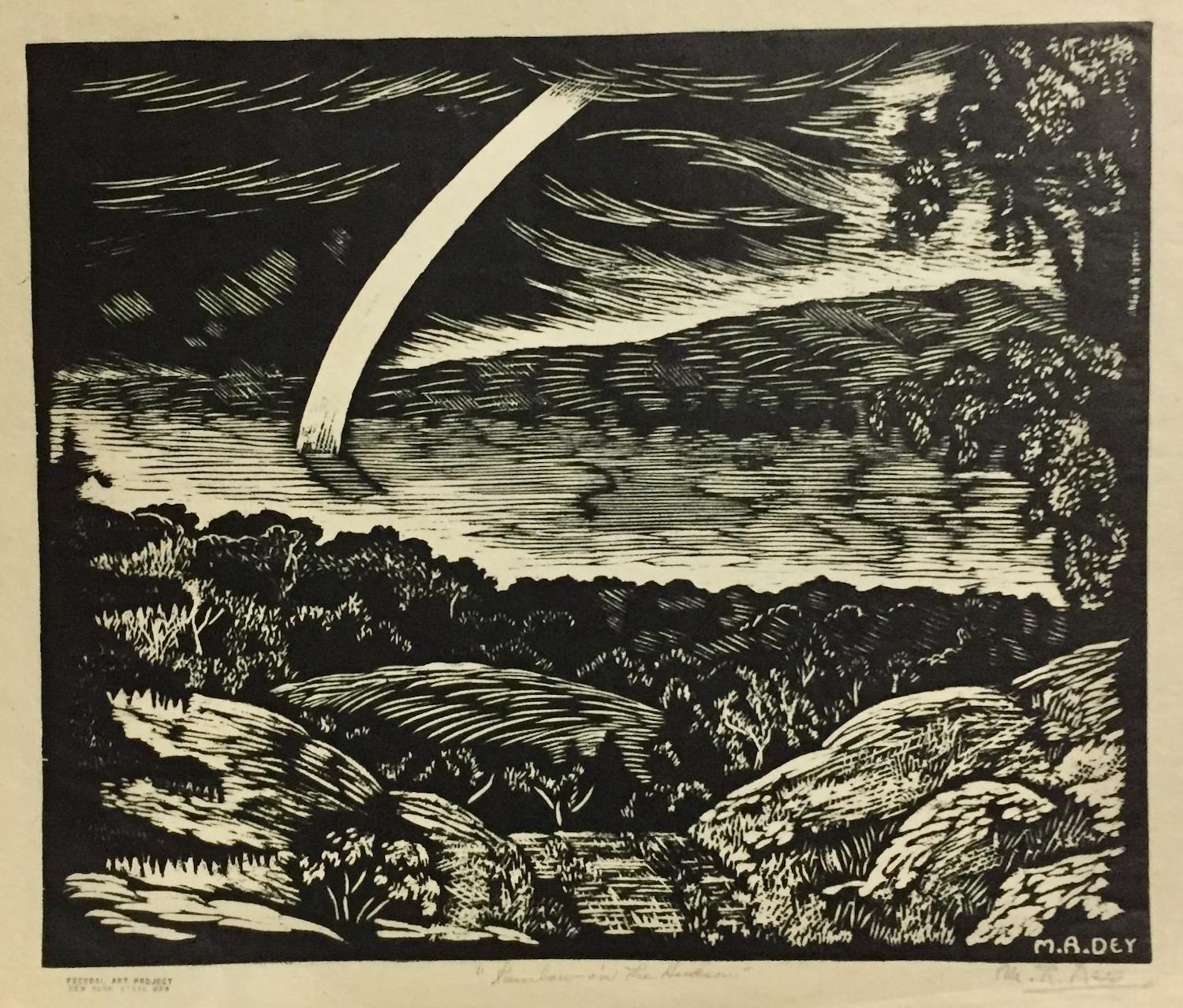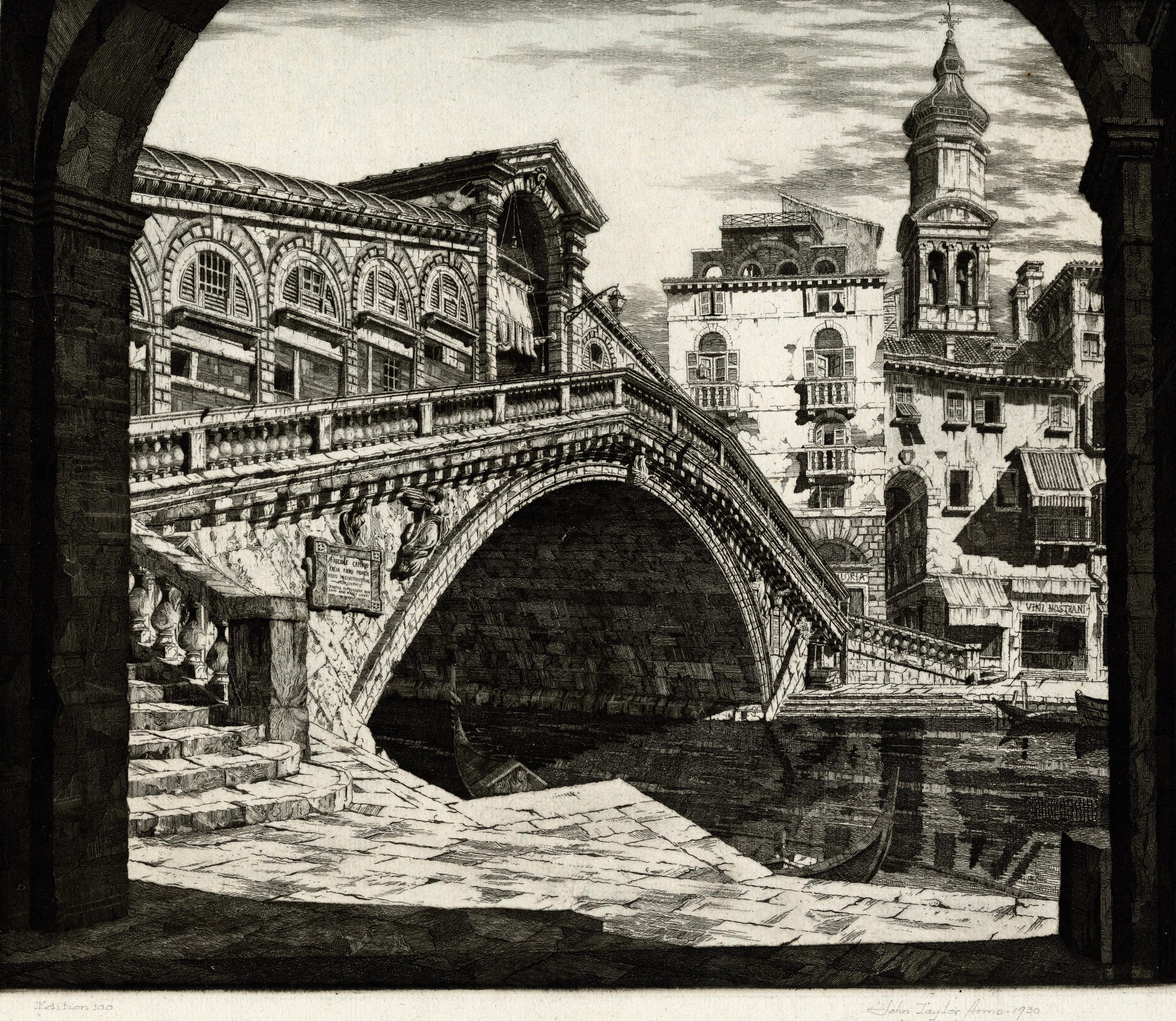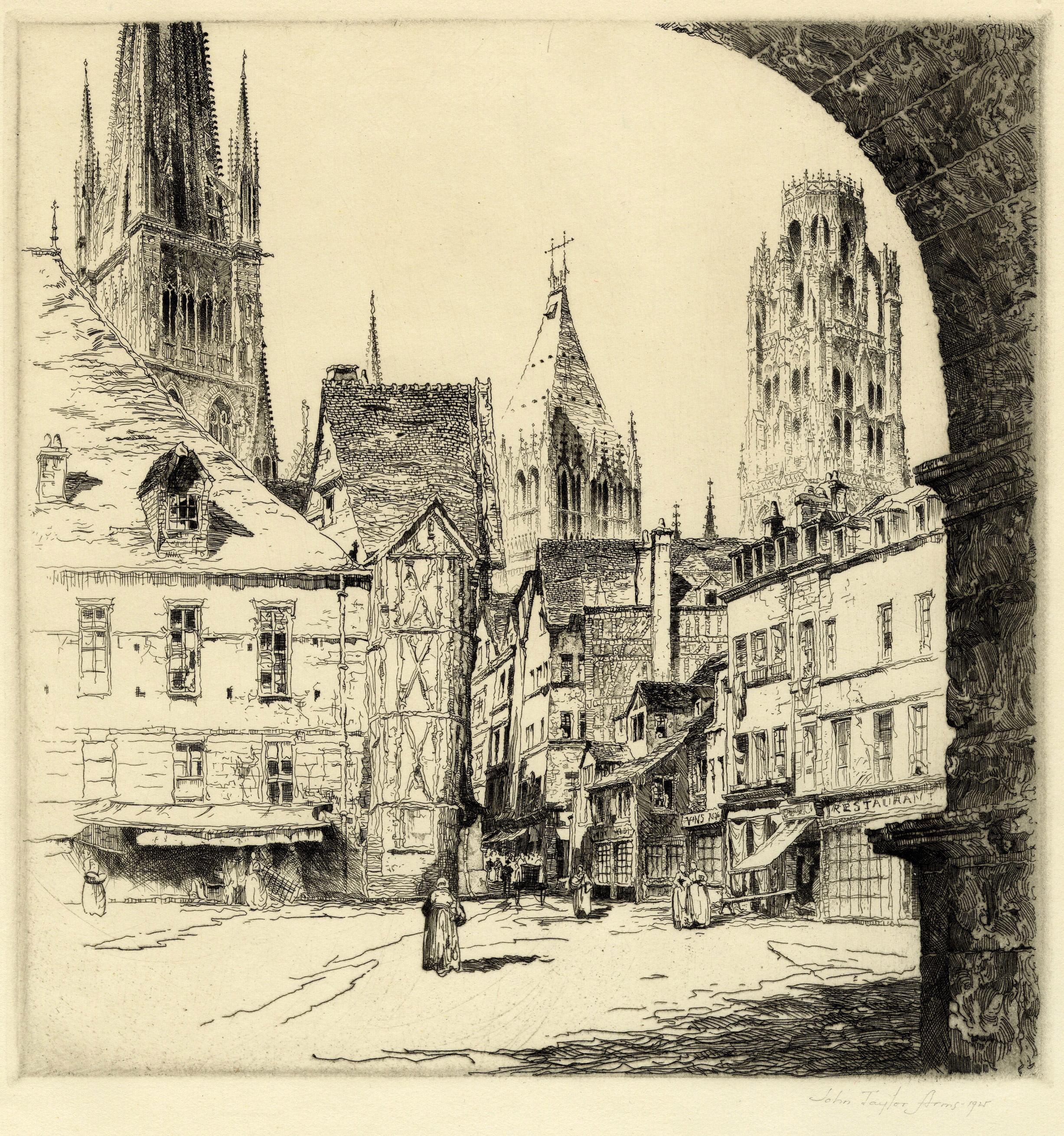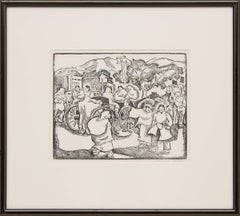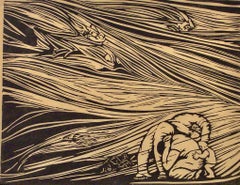
Colorful Bay Area Ranch with California Palm Trees, Linocut, Circa 1940s
View Similar Items
1 of 1
Mary Watterick EvansColorful Bay Area Ranch with California Palm Trees, Linocut, Circa 1940sCirca 1940s
Circa 1940s
About the Item
- Creator:Mary Watterick Evans (American)
- Creation Year:Circa 1940s
- Dimensions:Height: 6 in (15.24 cm)Width: 3 in (7.62 cm)Depth: 0.01 in (0.26 mm)
- Medium:
- Movement & Style:
- Period:
- Condition:
- Gallery Location:San Francisco, CA
- Reference Number:Seller: 682491stDibs: LU29822285113
You May Also Like
- 'Field' original abstract linocut in black by Wisconsin artist Schomer LichtnerBy Schomer LichtnerLocated in Milwaukee, WI'Field' is an original linocut by Wisconsin-based artist Schomer Lichtner. The composition presents fields of flowers, trees and grasses below a cloudy sky, but rendered with Lichtner's quintessential abstract sensibilities. This print is one from a series that each depict abstracted subjects in black silhouette, taking pleasure in the materiality of the linocut technique. The free forms of the plants resemble the lyrical mid-century works of the French artist Henri Matisse, which combined with these material concerns demonstrate Lichter's modern sensibilities. The prints from this series are unusual because of how below the image, Lichtner also includes his Chinese seal and a linocut remarque of a cow, each of which act as an additional signature of the artist on the artwork. Linocut in black and red on Permalife white wove paper 4.5 x 6 inches, image 11.5 x 8.75 inches, sheet 16.5 x 13.63 inches, frame Signed in pencil, below image, lower right. Edition 1/100 in pencil, below image, lower left. Chinese signature stamp in red, below image, lower right. Remaque of a cow in red, below image, lower right. Permalife watermark to paper. Framed to conservation standards in a shadow-box style mounting, using 100 percent rag matting, museum glass, and housed in a silver-finish wood moulding. Overall excellent condition with no creases or discoloration. Milwaukee artist Schomer Lichtner was well known for his whimsical cows and ballerinas and abstract imagery. He and his late wife Ruth Grotenrath, both well-known Wisconsin artists, began their prolific careers as muralists for WPA projects, primarily post offices. Lichtner also painted murals for industry and private clients. Schomer was a printmaker and produced block prints, lithographs, and serigraph prints. His casein (paint made from dairy products) and acrylic paintings are of the rural Wisconsin landscape and farm animals. He became interested in cows when he and Ruth spent summers near Holy Hill in Washington County. According to David Gordon, director of the Milwaukee Art Museum, Schomer Lichtner had a tremendous joie de vivre and expressed it in his art. Schomer Lichtner was nationally known for his whimsical paintings and sculptures of black- and white-patterned Holstein cows...Category
Late 20th Century American Modern Landscape Prints
MaterialsBlack and White, Paper, Linocut
- Saturday Morning (Market, Taos Plaza, New Mexico), 1950s Figural Linocut PrintBy Barbara LathamLocated in Denver, CO1950s modernist linoleum cut print titled 'Saturday Morning (Market, Taos Plaza, New Mexico) by New Mexican artist Barbara Latham. Depicting a busy Saturday morning at the market in Taos Pueblo with horse and cart, Native American figures, adobe buildings and mountains in the background. Presented in a custom frame with all archival materials, outer dimensions measure 16 x 17 ¾ inches. Image size is 8 ½ x 10 ½ inches. About the Artist: Beginning her career as a commercial artist, Barbara Latham travelled to Taos in 1925 seeking material for a greeting card. Serendipitously, she also found her life partner, Howard Cook, who was similarly looking for ideas for illustrations. Perhaps both were fueled in their quest by the tales of their mutual teacher, Andrew Dasburg, who knew of the energy and stimulation of this artist community. Observing local people and customs, Latham created genre scenes that offer a window into this now-vanished time and place. Her lively illustrations for numerous children's books are a significant contribution to that graphic art in the mid-20th century. Born in Walpole, Massachusetts, Latham's student days included Norwich Art School and Pratt Institute in Brooklyn; but it was contact with the charismatic Dasburg at the Art Students League in Woodstock that opened her world and her view of art. Getting work with companies like Norcross Publishing and Forum magazine, she eventually made her way to Taos. Among all the spirited young artists gathered there, she met Howard Cook, who was designing illustrations for Willa Cather's Death Comes to the Archbishop. The two married in Santa Fe and began a nomadic life together. The young couple made their way to Paris, a likely destination for modernist artists. Upon receiving a Guggenheim to study fresco painting in 1932, Cook, along with Latham, took an alternative direction and headed to Taxco, Mexico. At this time, Mexican muralists, such as Diego Rivera, were capturing the attention of progressive artists. During the Depression, both Cook and Latham aligned themselves with a populist ideal. Latham contributed work, such as "Fording the Stream" and "Bear Family," to the American Artists Group, which was founded to produce original prints at affordable prices. The couple also travelled in the Deep South to the Ozarks and to "Alabama's Black Belt." When Latham settled in Taos, she was committed to an art of and for the people. Rather than a romanticized re-creation, her choice of subjects was based in common everyday activities, favoring those which brought people together. Taos Pueblo was an ancient, indigenous community, and Latham's view extended that tradition into a contemporary, multi-ethnic village. Sharing some of the spirit of WPA photographs...Category
Mid-20th Century American Modern Figurative Prints
MaterialsLinocut
- Evelyn G. Schultz, TyphoonLocated in New York, NYThe only mention I can find of Evelyn G. Schultz is that she was a charter member of the San Diego Watercolor Society. But the medium of the linocut (here on tan paper) was frequentl...Category
1940s American Modern Figurative Prints
MaterialsLinocut
- Harold E. Keeler, Water FallLocated in New York, NYHarold E. Keeler worked in Hollywood as a set designer. That seems especially important here because the Water Fall looks a little as though it could be a woodland stage set -- to me...Category
1930s American Modern Landscape Prints
MaterialsLinocut
- "Country Church, " Town Landscape Linoleum Cut by Elsa E. UlbrichtLocated in Milwaukee, WI"Country Church" is an original linoleum print by Elsa E. Ulbricht. A front facing view of a country church is proudly replicated within this print. Image:7" x 5" Framed: 15.25" x 13.25" Painter, Teacher When she directed The Milwaukee Handicraft Project, Elsa Ulbricht...Category
1930s American Modern Landscape Prints
MaterialsLinocut
- 'Monday in Wick Haven' original linoleum cut print by Howard ThomasBy Howard ThomasLocated in Milwaukee, WIIn this image, Howard Thomas presents the viewer with a domestic interior. The image is dominated by the figure of a black woman, resting her arm on an ironing board. To the right, the tool of her task dangles a chord above a checker tiled floor. Beyond, though a window, neighboring homes fill the landscape. The careful line-work of the linocut adds a sense of expressionism to the scene, but the image nonetheless falls into the Social Realism that captivated most American artists during the Great Depression. This print was published in 1936 as part of the Wisconsin Artists' Calendar for the year 1937, which included 52 original, hand-made prints – one for each week of the year. 6 x 5 inches, image 10 x 7.13 inches, sheet 12.37 x 12.43 inches, frame Entitled "Monday in Wick Haven" lower left (covered by matting) Inscribed "Linoleum Cut" lower center (covered by matting) Artist name "Howard Thomas" lower right (covered by matting) Framed to conservation standards using 100 percent rag matting and museum glass, all housed in a silver gilded moulding. Quaker-born in Ohio, Thomas trained in the Midwest at Ohio State University and the Chicago Art Institute. He taught in the Art Department of the Milwaukee State Teachers College (now University of Wisconsin-Milwaukee) where he became good friends with Carl Holty, Edward Boerner, Robert von Neumann...Category
1930s American Modern Figurative Prints
MaterialsLinocut, Engraving
